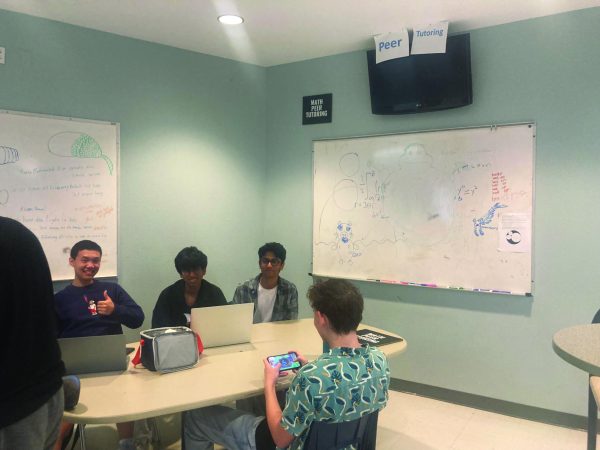Spotlighting Race at LASA
December 15, 2019
The experiences and perspectives of black and Latino students at a predominantly white and Asian high school like LASA often stay private and are not shared and spotlighted in a way that affects social change in our high school community. At the Liberator, we believe giving a voice to students whose experiences are much too infrequently addressed will help make LASA a more inclusive and comfortable place for all students.
In a discussion of the history of racism in America, all eyes are instantly on you. In every class you walk into, you are almost always the only person who looks like you. This is the experience faced by countless black and Latino students at the Liberal Arts and Science Academy.
President of the African American Outreach Committee and LASA parent, Stacy Patton, works to build a more welcoming community for prospective and current African American students at LASA. By targeting incoming students and parents, she said she hopes to make the transition to school easier.
“There’s the meeting at the beginning of the year, in which we invite all of the families,” Patton said. “We have a dinner, and we invite people in and we talk about resources at the school…trying to build a little community at LASA, around being black in white spaces. Frankly, we are hopeful that by doing that we can pave the way for more students of color to attend the school.”
As a parent of mixed-race students, Patton said she has heard first-hand testimonies of the racial climate at LASA from her children. According to Patton, not only does the environment tend to alienate students from the rest of their peers, the pressure associated with isolation also troubles some students.
“I think that a lot of the children who are attending, students of color, … very often they are the only student of color in the room,” Patton said. “So when things come up, like in history class you might be discussing lynching, for instance, and you’re the only person of color in the room, suddenly everything you say takes on a lot more weight because you’re the only representation that’s there. That’s a lot of pressure, and I think it causes some students to perhaps shut down, not say anything, they don’t want to engage because it might cause an argument. Other students do engage, and then end up feeling marginalized by the discussion.”
Junior Luis Urrieta said he did not know what to expect when he applied to LASA after spending two years at the Harmony School of Excellence, a school with a large Hispanic population and emphasis on STEM subjects. While he did know LASA was an academically rigorous school, he said he had little to no expectations about what the school would actually be like.
“I had never thought about LASA until my 8th-grade year,” Urrieta said. “I really didn’t know much about it. Especially not about race. I just thought it was a normal high school experience.”
When Urrieta arrived at LASA, he was subjected to an environment he had never experienced before. In addition to transitioning to high school, Urrieta said he had to figure out how to navigate a new group of people. This unfamiliar environment made it more difficult for him to be open socially and engage in in-class activities, according to Urrieta.
“I came here having no friends, and I found it really difficult to make friends because I became super shy and quiet, just because of the simple reason that never in my life had I been surrounded by so many white people,” Urrieta said. “I found it really hard to participate in my classes or even talk to the people around me. So it definitely wasn’t what I was expecting. It definitely was a big hit.”
In addition to the adjustments that come with a new school environment, Urrieta received racially charged comments about his acceptance and ability to be successful at the school from both students and faculty members. Presumably, these comments stem from LASA’s holistic admissions criteria which was implemented with the acceptance of the class of 2021. The admissions criteria introduces a set of special circumstances that are used to evaluate 20% of accepted students. The first 80% of applicants are admitted solely based on the student’s application.
“I had students tell me that I was only here because of my race, the only reason I got accepted was that I was Mexican/Latino, and sometimes when I found myself struggling and I would talk to teachers about it, they’d always tell me, ‘Oh well, not everyone is meant to be at LASA’ or ‘Not everyone is meant to succeed here at LASA,’” Urrieta said.
In the face of this discrimination, Urrieta became motivated to prove those negative comments wrong. He used them as motivation to work harder, however, they also made him gravitate towards people he was more familiar with.
“It would hit me pretty hard at some point, but later it just pushed me on because I just thought, ‘Well I’ve got to prove them wrong,’” Urrieta said. “As soon as I came into that mode of, ‘OK, I feel very different because of this and that,’ I automatically went to the idea of ‘I need to hang out with people my color.’ I quickly separated myself from hanging out with white people to people of minority here at LASA which is definitely a problem.”
Despite Urrieta’s previous negative encounters with students and staff and hesitation to open up socially, throughout his 3 years at LASA he said he feels as though he has come a long way. He feels as if the school is gradually making progress towards becoming a more inclusive place for minority students.
“I definitely feel like LASA as a whole slowly but surely, they’re getting there,” Urrieta said. “Slowly but surely, everyone starts talking to each other, even if it takes two or three years. As for my case, I’m finally talking to people who are not of the same race or color or ethnicity… I just feel like we can’t really expect for it to change quickly because as I have seen and experienced it, it doesn’t take a year or two.”
While he believes that schools’ respective administrations should play some role in the process of fostering communications between students from LASA and LBJ, Urrieta said that making minority students more comfortable is ultimately the responsibility of the students themselves. In order for the campus to become more welcoming, he thinks that all students need to play an active role.
“In terms of helping the process [of integration] to go faster, I feel like sometimes that really just comes down to the student, as to how comfortable they feel doing that because most of the time that is just the problem, feeling comfortable or being ready to be open, and we can’t really rush that or do anything to make it move faster,” Urrieta said. “I feel like as of right now, what administration and what LASA’s doing is enough, but I feel like to some extent it comes down to the students themselves from both sides of the equation.”
Student and parent-led organizations like the Black and Latino Student Union, Diversity Council and the African-American and Latino Outreach Committees work to make the campus a more welcoming and inclusive space for all racial groups through events like Culture Day, Thankful for Diversity Day and the “LASA Es Su Casa” dinner. All of these events attempt to increase cultural awareness and shed light on the perspectives of minority students. Senior Citlalli Soto-Ferate is an officer in the Black and Latino Student Union. She focuses on providing a community for black and Latino students that might not otherwise get in their LASA experience.
“For BLSU, it’s more like a support group where you get together with people who either have the same experience as you or similar experiences where they are the odd ones out at school, or people who aren’t necessarily black or Latino, but they feel that it is a problem and they want to help address it,” Soto-Ferate said. “So it’s just kinda like where you hang out and you just talk about different things and a way to meet other people who have similar experiences as you.”
Despite the BLSU’s efforts, creating a greater sense of community and trust between student demographics requires efforts from both students and staff, according to Soto-Ferate. She said a step forward in discouraging prejudiced and ignorant comments from students may require more participation from teachers and staff.
“I think if teachers were to encourage maybe going to culture day, or at least just calling out people when they say microaggressions or do stupid stuff that should not be done…” Soto-Ferate said. “If a student is saying something racist, a teacher should call that out, they shouldn’t just be like ‘Oh they’re just kids,’ because that’s what tells students that behavior is ok, and it’s a big problem.”
In addition to more engagement from teachers, Patton believes that it’s important for students’ concerns to be addressed in other ways. Specifically, she suggests more conversations to highlight the experiences and opinions of minority students who are affected by it.
“I think we need to have more open conversations about it,” Patton said. “Every time I’ve talked to students of color at LASA about these issues, they are immediately engaged and interested in talking with me about it. They are hungry for it because they’re experiencing it, and yet there’s no one talking about it. So the dominant conversation is ‘Nothing is happening, it’s all fine…. right?’ but it doesn’t feel fine for the students of color in that environment.”










